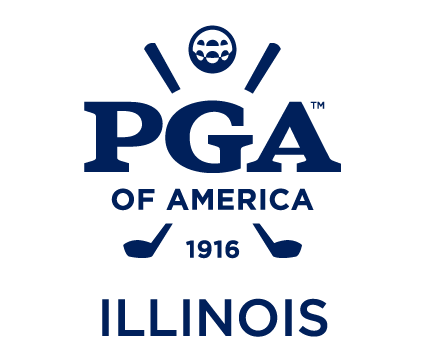Sunday afternoons often have a different look at Village Links. It doesn’t have the sedate feel of golfers sprinkled throughout the course playing leisurely rounds before embarking on another work week.
No, this scene is quite unique. Village Links is humming with the sights and sounds of junior golfers, wearing jerseys with numbers on their backs. They fill the fairways scurrying to their next shots. Their parents, rushing to follow their children on foot or in carts, form enthusiastic cheering sections.
Village Link’s Noel Allen always is struck by what he witnesses each week.
“With everyone out there, it’s such a flurry of activity,” Allen said. “It’s really exciting to see that on our golf course.”
It is all is part of the PGA Junior League Golf, a program that is turning into one of the biggest, and most essential, success stories in the game. The program is designed to attract junior players to golf and have them compete in a scramble team format. It is golf’s version of Little League Baseball, complete with jerseys.
Dennis Johnsen of Pine Meadows says the Illinois PGA section program has grown from 3 teams in 2012 to 180 teams this year, making it one of the largest in the country. Nationally, he says there are 43,000 kids participating in PGA Junior League Golf.
When Johnsen looks at the growth, he always has a laugh about his reaction when he was first told about the idea in 2012.
“I actually used the word, ‘Stupid,’” Johnsen said. “Kids playing in jerseys? Let’s just say I was very skeptical.”
It didn’t take long for Johnsen to realize his assessment was more offline than a wildly sliced drive into the trees.
“When we had our first matches, I looked around and saw all these kids and parents out there,” Johnsen said. “I said, ‘Boy Dennis, did you ever have this one wrong.’”
The PGA Junior League concept quickly spread throughout the area. Kevin Weeks oversees the program at Cog Hill, which had 99 players this year.
Like Johnsen, Weeks also was skeptical at first. Not anymore.
“I didn’t think kids would go for the scramble format,” Weeks said. “But you’re seeing younger players hit shots from places they’ve never been before. They love that. With the team format, the good golfers have been learning to embrace the mentoring aspect of the game. They’re passing on what they’ve learned. It really creates an environment for nurturing and mentoring.”
Why does PGA Junior League work?
“It’s fun,” Johnsen said. “The kids enjoy it. It’s not much more complicated than that.”
Allen says the kids enjoy the team element. “It’s a great magnet for getting them out here,” he said.
Weeks adds, “The value is that his program has something for everybody when done correctly. However, this is time consuming. It takes some effort. You can’t just have them out there hitting range balls.”
Indeed, Weeks says it is essential to engage and stimulate the kids during weekly practice sessions. Skills are taught through making up various games. For instance, he does versions of Tick-Tack-Toe during putting drills.
“You’ve got to make it fun for them,” Weeks said.
At the elite end of the spectrum, the area’s best junior players recently participated in local competition for the Drive, Chip and Putt Championship. Thirty-two players in the various age categories moved on to the regional at The Honors Course in Ooltewah, Tennessee on Sunday, Sept. 24. Participants who advance through local, sub-regional and regional qualifying in each age/gender category earn a place in the National Finals, which is conducted at Augusta National Golf Club the Sunday before the 2018 Masters Tournament and is broadcast live by Golf Channel.
“The Drive, Chip and Putt Championship is such a wonderful program and competition for young players to test their skills and have fun,” said Carrie Williams, Executive Director of the Illinois PGA Section. “Player development is so important to the future growth of the game and it’s exciting to see so many enthusiastic kids playing golf and advancing to the Regional event.”
Many of those top juniors participated in the PGA Junior League. Johnsen, though, points to a statistic that truly gets to the scope of the program.
“Eighty percent of players registered for the Junior League consider themselves beginner or recreational players,” Johnsen said. “Only 20 percent consider themselves competitive, or elite level players. That says you’re growing the game by bringing in new people who want to learn how to play. The elite person always is going to play. The business needs people who want to play the game for fun.”
Weeks is heartened by getting letters from parents, who say their child “wears their jersey to bed” in advance for a match the following day.
“We had a parent who asked about having a birthday party at the course, complete with all the games we play at practice,” Weeks said. “That’s great. That’s telling me that the kids want to be at the course.”
Indeed, that gets to the core of the program. Allen says today’s PGA Junior League players are tomorrow’s regular consumers of golf.
“Getting these kids out there now is going to help us in the future,” Allen said. “Hopefully, you get them hooked on the game, and they go on to play for a long time.”

